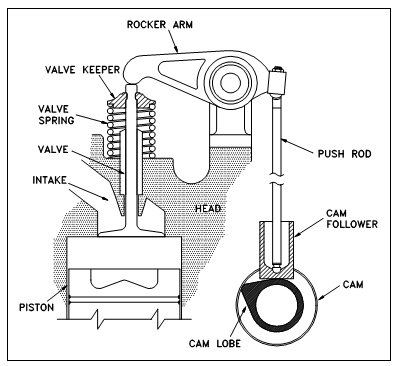Diesel Engine Valve Train:
As the valve is opened through the camshaft, it compresses the valve spring. The energy stored within the valve spring is then used to close the valve as the camshaft lobe rotates out from under the follower. Since an engine experiences fairly huge changes in temperature (example for ambient to a normal running temperature of about 190°F), its elements must be designed to permit for thermal expansion. Thus, valve pushrods, the valves, and rocker arms must have a few method of permitting for the expansion.
This is accomplished through the use of valve lash. Valve lash is the word given to the "slop" or "give" in the valve train before the cam in fact begins to open the valve.
The camshaft is driven through the engine's rankshaft by a series of gears known as idler gears and timing gears. The gears permit the rotation of the camshaft to correspond or be in time along with, the rotation of the crankshaft and through permit the valve opening, valve closing, and injection of fuel to be timed to occur at precise intervals in the piston's travel. For increase the flexibility in timing the valve opening, valve closing, and injection of fuel, and to increase power or to decrease cost, an engine might have one or more camshafts. Classically, in a medium to huge V-type engine, every bank will have one or more camshafts per head.

Figure: Diesel Engine Valve Train
With the larger engines, the intake valves exhaust valves, and fuel injectors might share a general camshaft or have independent camshafts.
Depending on the categories and make of the engine, the location of the camshaft or shafts varies. A camshaft(s) in an in-line engine is commonly found either in the head of the engine or in the top of the block running down one side of the cylinder bank. The above figure gives an instance of an engine along with the camshaft situated on the side of the engine. Above figure gives an example of an overhead cam arrangement as on a V-type engine. On small or mid-sized V-type engines, the camshaft is commonly situated in the block at the center of the "V" among the two banks of cylinders. Within larger or multi-camshafted Vtype engines, the camshafts are commonly located in the heads.